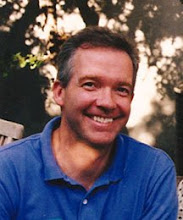
I reached the summit of Everest at dawn on May 20, 2009, just as the very first rays from the rising sun were bathing the highest point on earth with a golden glow and casting the shadow of a perfect pyramid on the high Himalayas. It is nothing short of a miracle that I was blessed with this experience, because I found Everest to be a shockingly dangerous mountain to climb. I am truly amazed that more people don't perish in the attempt to reach its lofty summit. On the way up I took a bad fall on the Hillary Step,which resulted in a series of stress fractures in my right hand. A carabiner I'd clipped in to the fixed rope prevented me from falling further and saved my life. I'm thinking of having it covered in gold leaf. I wasn't about to turn around so close to the summit, broken hand or not, so I got myself back up the Hillary Step and onto the summit ridge right behind our expedition leader Alex Abramov. He was none the wiser until he saw me fumble with my left hand trying to clip in to a fixed rope on the descent. The descent was complicated by my broken hand. Climbing is mostly done with the feet, and maintaining proper balance is critical, and yet the hands are necessary to use safety devices like carabiners, ascenders, and belay/rappel devices. As much as it was a miracle that I reached the summit of Everest, it was even more of a miracle that I was able to descend safely all the way down to Camp II, our advanced base camp. I've never been so utterly and completely exhausted in my life.
I'm typing this with a temporary brace on my right hand. Tomorrow the doctors here in Kathmandu are going to fit a plaster cast. There is so much I'd like to share, but this is a bit of a challenge.
Hopefully I'll be able to elaborate on these themes at greater length when I get a more permanent solution for my hand, but there are three things I'd like to share.
(1) The incredible true story of courage and friendship demonstrated by my friend Noel, who short-roped our friend Patrick down from the summit--as part of Team II they reached the summit one day later than I did as part of Team I--when Patrick temporarily lost his vision, putting his own life at risk to protect Patrick. It took them so long to descend in this way they came down the treacherously steep and icy Lhotse face in the dark. I will forever remember their headlamps shining in the darkness as beacons of true courage and friendship. By his own admission, Noel, from Northern Ireland, is "a wee man," not particularly tall, but in my estimation he is a giant among men. Noel, I'm glad to know you.
(2) The remarkable life-changing spiritual epiphany I experienced on the summit of Everest.
(3) The ordeal of the trek down from Everest base camp to Lukla, where I was able to catch a flight back to Kathmandu. We covered those 60-70 kilometers in three days. I rode a Tibetan pony on the third day from Namche Bazaar to Lukla in the pouring rain, coaxing the sure-footed beast up and down 45-55 degree rock and mud-covered pitches.
More to come, depending on how restrictive the cast is that the doctors here in Kathmandu are going to apply tomorrow.



